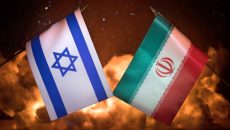What the devil is happening in Iran? This question is to be taken more than figuratively, seeing how the political battle has been waged through accusations of “witchcraft” and “ties to the occult” for months now. Sects and sorcerers, angels and demons have suddenly appeared, and it has become crucial to determine whether President Mahmoud Ahmadinejad is a follower of the group that worships the hidden Twelfth Imam (a figure nevertheless central to the Shi’a faith).
Two factions are exchanging lethal blows on this basis. Ahmadinejad started this by removing Intelligence Minister Heydar Moslehi from office. Ayatollah Ali Khamenei, Supreme Leader and the country’s highest religious authority, forced his reinstatement. And when Ahmadinejad protested by skipping cabinet meetings, for good measure around twenty of his allies were accused of witchcraft and arrested. Among them were Chief of Staff Esfandiar Rahim Mashaei, an in-law of and possible
political successor to President Ahmadinejad (who, after two terms, will be unable to run for reelection in 2013) and Hojjatoleslam Abbas Amirifar, head of prayer at the presidential mosque. Ahmadinejad fought back: he ousted three important ministers: those in charge of Welfare (Sadeq Mahsouli), Industry (Aliakbar Mehrabian) and Oil (Masoud Mirkazemi), making himself caretaker Oil Minister.
Basically, Khamenei is keeping the army and the secret service close by his side while Ahmadinejad has picked up the keys to the economy. Obviously, gnomes and sorcerers have nothing to do with it. This battle has been going on since at least 2007, which is when Ahmadinejad managed to get rid of Ali Larijani, the country’s top nuclear negotiator. Shortly after that, other loyal followers of Ali Khamenei lost their positions: the Ministers of Interior Affairs, Intelligence and, shortly after that, Foreign Affairs.
To put it in our terms, Ahmadinejad is leading a secular front which is seeking to reduce the power that up until now has been in the hands of the clergy led by Khamenei. In order to do that, he needs to advance a policy of cautious social openness so as to create benefits for the Iranian middle class, while the clergy is more interested in keeping up the policy of funding the myriad of companies owned by the Revolutionary Guards, the Pasdaran and the other more or less military corps which are parasitic yet protect the regime. Iran is the world’s 17th largest economy but it sees little growth (1-2% annually), partly because it has a feeble internal market.
In the same way and for the same reasons, Ahmadinejad needs to come out of international isolation and maintain an ideology tinged with nationalism, even to the detriment of the Islamic universalism so dear to the clergy. His problem is that the clock is ticking. Parliamentary elections will be held in March 2012, presidential elections in 2013. Mahmoud Ahmadinejad has less than a year to garner power and consensus. Otherwise, in two years’ time, the clergy will choose their own puppet to be president.



